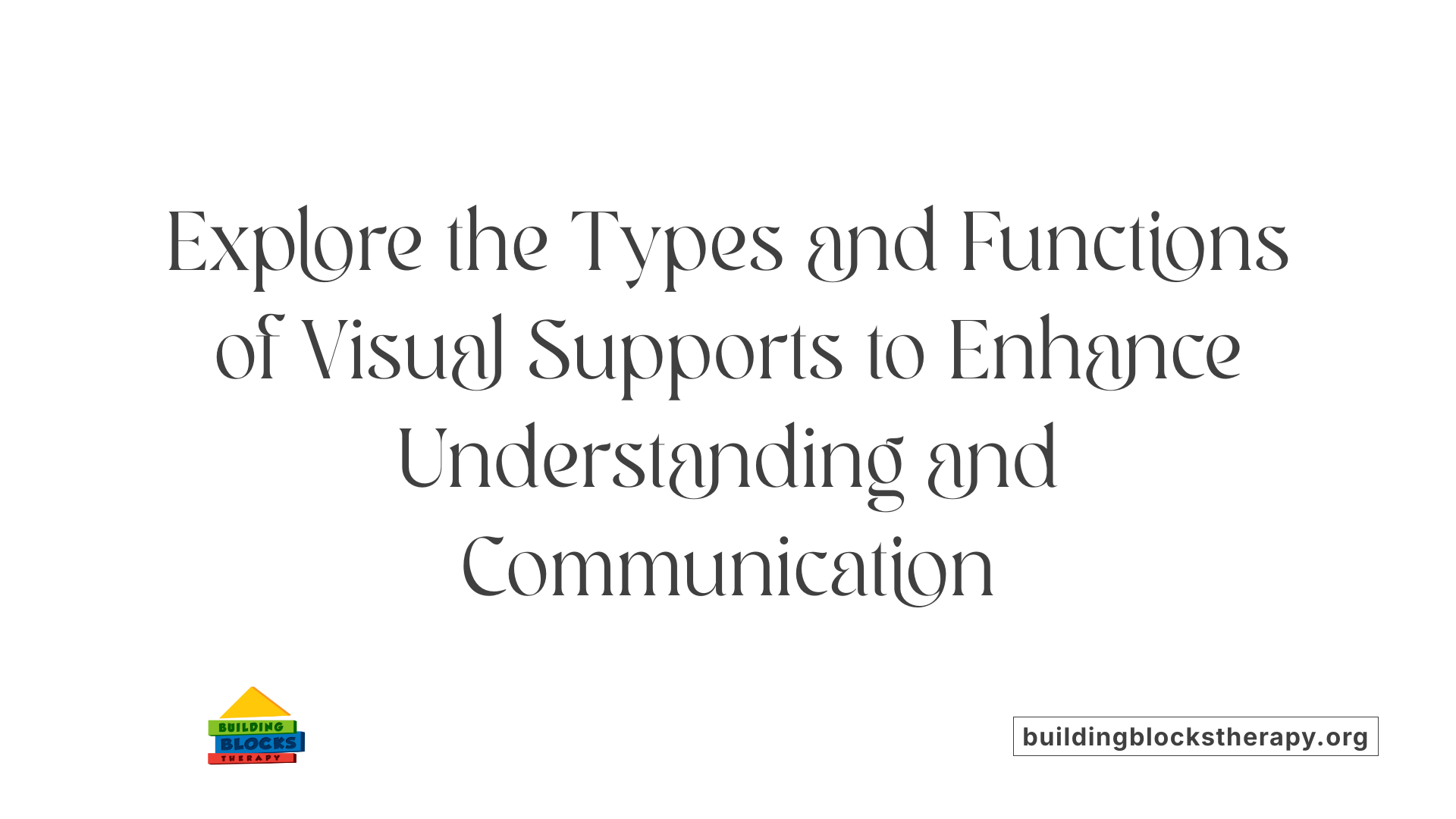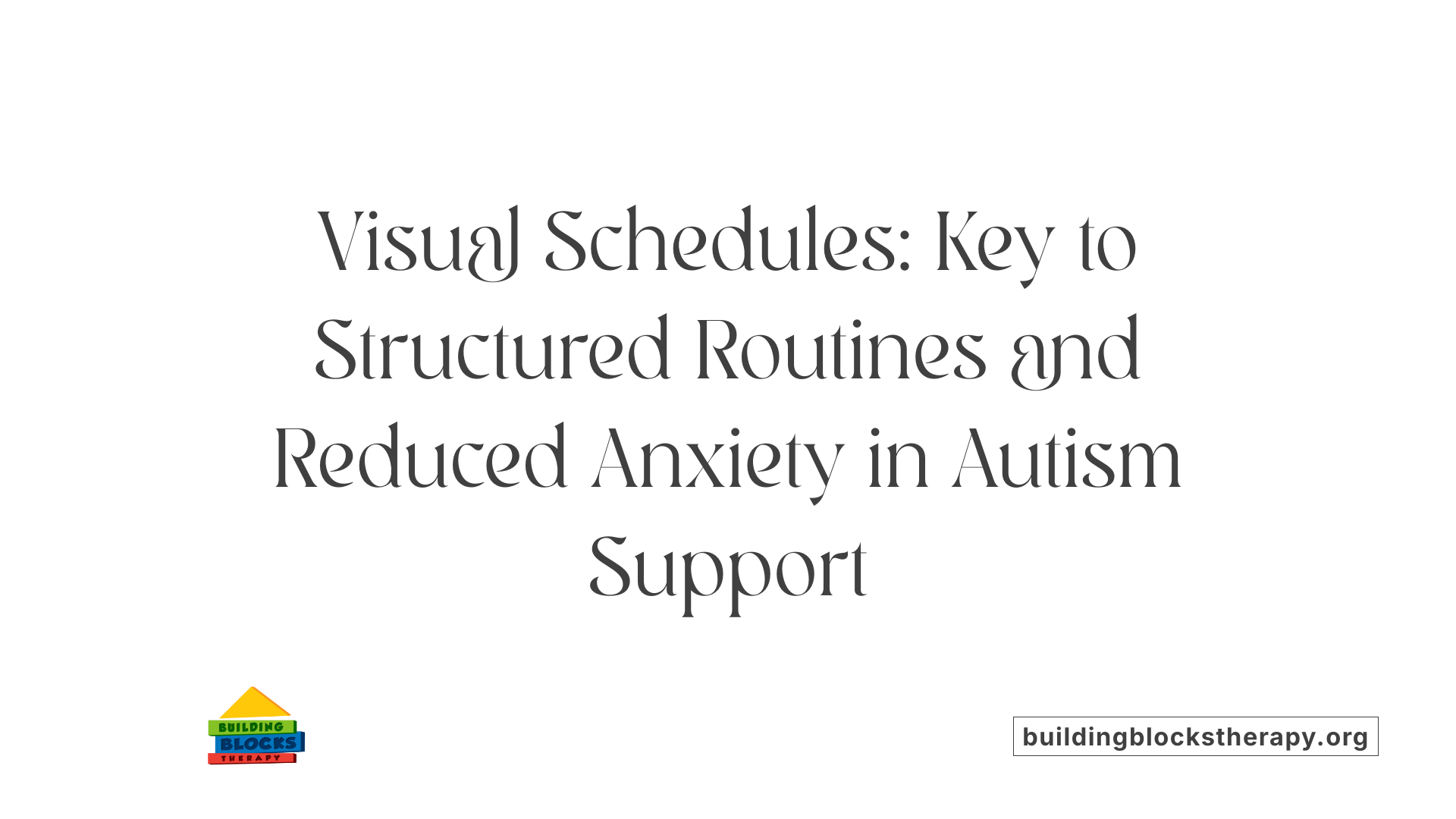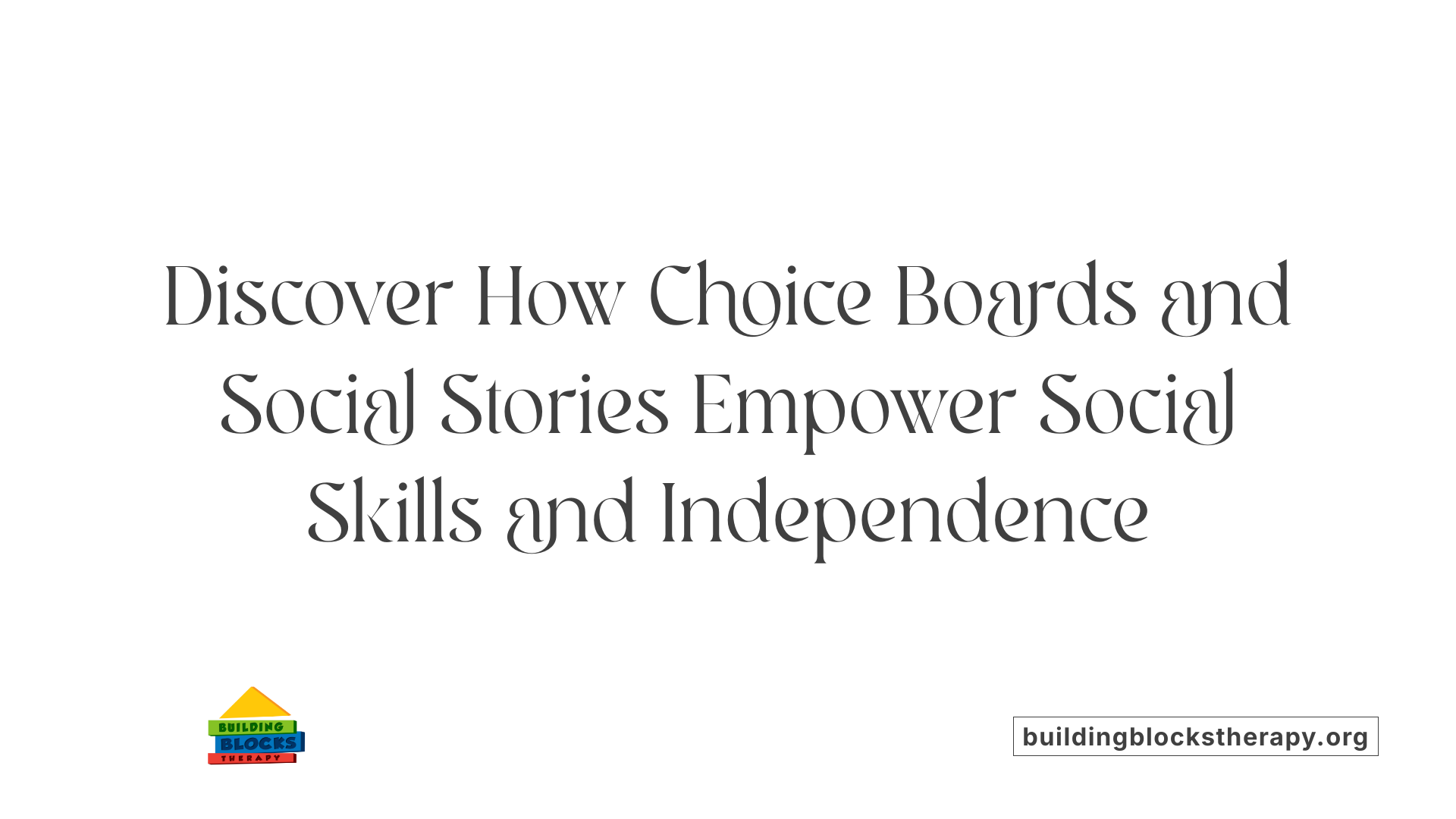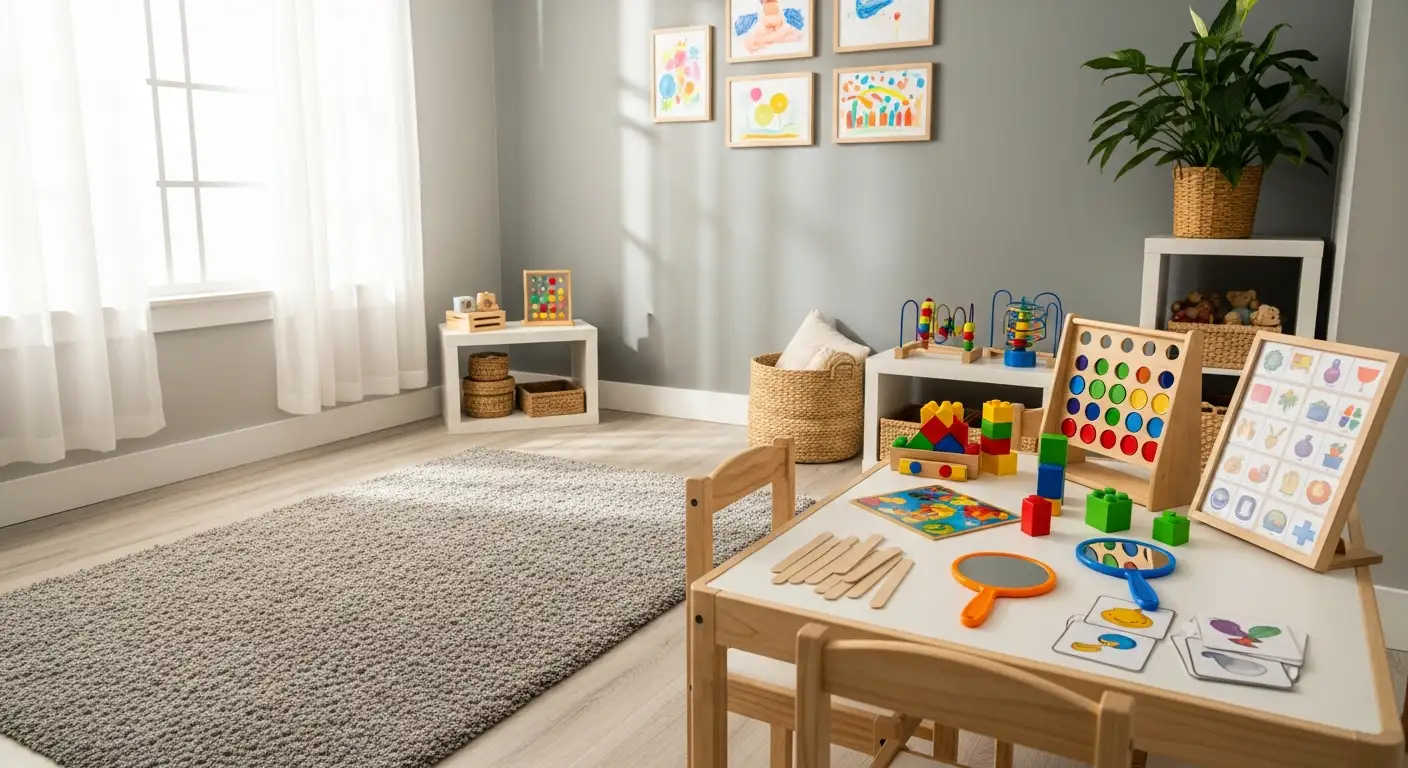Understanding the Role of Visual Supports in Autism Therapy
Visual supports are powerful tools in autism therapy, aiding individuals in navigating their daily routines, improving communication, and fostering independence. This article explores how visual supports integrate with therapy approaches, notably Applied Behavior Analysis (ABA), to promote learning and development in individuals with autism spectrum disorder (ASD). We delve into types of visual supports, their evidence base, and practical strategies for implementation across environments.
Foundations of Applied Behavior Analysis in Autism Therapy
What is Applied Behavior Analysis (ABA) therapy and how is it used to support individuals with autism?
Applied Behavior Analysis (ABA) therapy is a science-based approach designed to improve social, communication, and adaptive skills for individuals with autism. It relies on principles of learning theory, particularly reinforcement and behavioral analysis, to understand how behavior is shaped by the environment.
How does ABA improve social, communication, and adaptive skills?
ABA focuses on increasing positive behaviors such as language use, social interaction, and daily living skills, while working to decrease challenging behaviors. This is achieved by carefully observing and analyzing behaviors to identify triggers and consequences, enabling targeted intervention strategies.
Techniques used in ABA like the ABC model, Discrete Trial Training, and Pivotal Response Treatment
One core technique, the ABC model (Antecedent, Behavior, Consequence), helps break down behaviors by examining what happens before and after the behavior occurs. Methods such as Discrete Trial Training (DTT) involve breaking skills into small, teachable steps. Pivotal Response Treatment (PRT) targets crucial developmental areas to produce broad improvements. These techniques, among others, are applied flexibly depending on individual needs.
Role of customized programs and professionals
ABA therapy programs are highly individualized and created by qualified professionals like Board Certified Behavior Analysts (BCBAs). These experts tailor interventions to fit each learner’s unique strengths and challenges, which enhances effectiveness. Ongoing assessment and adjustment ensure the therapy meets changing needs.
Effectiveness and best-practice status of ABA
Extensive research demonstrates that ABA is an evidence-based best-practice approach for autism. It is most effective when started early and delivered intensively over time. ABA's systematic and data-driven method supports measurable progress in communication, social skills, behavior, and independence, making it a cornerstone in autism therapy.
Benefits of Behavioral Analysis Therapy for Autism Across Ages
How does behavioral analysis therapy benefit children and adults with autism?
Behavioral analysis therapy, primarily Applied Behavior Analysis (ABA), is a highly effective approach for supporting individuals with autism across different ages. By focusing on personalized, evidence-based methods, ABA positively impacts communication, social skills, and daily living abilities.
Personalized, evidence-based strategies impact
ABA employs carefully tailored strategies based on each individual's unique needs. Therapists use positive reinforcement to encourage wanted behaviors and analyze environmental triggers to reduce challenging behaviors. This customized approach maximizes the effectiveness of interventions.
Improvements in communication, social skills, daily living abilities
Through ABA, children and adults with autism gain enhanced language and social interaction skills. They learn essential daily tasks such as self-care and emotional regulation, which promotes independence and fosters better relationships.
Role of early intensive intervention
Starting early intensive ABA therapy leads to significant developmental gains. Early intervention helps children acquire foundational skills more quickly, which improves their readiness for school and social environments.
Enhancement of life skills and quality of life
ABA supports the acquisition of life skills that facilitate greater independence and autonomy. Over time, these improvements translate into a better quality of life by enabling individuals to navigate social settings and daily activities more comfortably and confidently.
In summary, behavioral analysis therapy offers a research-backed and adaptable framework that supports individuals with autism at every stage of life, leading to meaningful progress in communication, social functioning, and independent living.
Qualifications of Professionals Delivering Autism and Behavioral Therapy
What qualifications do professionals offering autism therapy and behavioral analysis typically have?
Professionals providing autism and behavioral therapy are usually certified as Board Certified Behavior Analysts (BCBA). This graduate-level certification requires a master's degree in applied behavior analysis or a related field, completion of supervised practice hours, and passing a comprehensive exam administered by the Behavior Analyst Certification Board (BACB).
Advanced practitioners with doctoral-level training may earn the BCBA-D credential, reflecting their extensive expertise. Their training covers a deep understanding of Applied Behavior Analysis (ABA) methods, ethical standards, assessment techniques, and intervention strategies such as positive reinforcement and the A-B-C behavioral model.
BCBAs often lead and supervise teams that include Registered Behavior Technicians (RBTs) and Board Certified Assistant Behavior Analysts (BCaBAs), ensuring effective, high-quality therapeutic service delivery. Many also hold degrees in psychology, education, or related fields, which strengthen their knowledge base.
Continued professional growth is essential. These professionals engage in ongoing education and training to maintain certifications and keep abreast of the latest evidence-based practices, guaranteeing that therapy is both ethical and effective.
Core Behavioral Techniques and Visual Supports in Autism Therapy
What types of behavioral techniques are commonly used in autism therapy?
Common behavioral techniques in autism therapy revolve around Applied Behavior Analysis (ABA). Two key methods include Discrete Trial Training (DTT), which breaks skills into small, taught steps with clear rewards, and Pivotal Response Training (PRT), which encourages learning in natural settings by focusing on pivotal areas like motivation and communication. These techniques help teach new skills while reducing unwanted behaviors.
How does the use of visual supports enhance instruction?
Visual supports such as pictures, symbols, schedules, and choice boards play a crucial role in autism therapy. They provide concrete cues that help students understand routines and expectations, bridging communication gaps and reducing anxiety. Visual schedules break daily activities into clear steps, allowing children to anticipate what comes next, while social stories use photos or illustrations to explain social situations and appropriate behaviors.
What is task analysis and how is it applied?
Task analysis involves dividing complex tasks into smaller, manageable steps. Visual aids, including charts or diagrams, accompany these steps to boost comprehension and independence. For example, teaching a child how to brush their teeth or dress themselves can be simplified into sequence cards or picture checklists. This approach supports learners in gradually mastering each element before moving on.
How do positive reinforcement and caregiver involvement contribute to therapy?
Positive reinforcement underpins many ABA strategies by rewarding desired behaviors to encourage repetition. Caregiver involvement is essential, ensuring that strategies like visual supports and routines are consistently applied across home and educational settings. Families and professionals collaborate to personalize supports, foster independence, and monitor progress.
Why are structured routines and teaching emotional regulation important?
Structured routines provide predictability and reduce anxiety for children with autism. Visual supports help establish these routines clearly, while teaching emotional regulation skills enables children to manage their feelings effectively. Calm-down spaces and consistent prompts, combined with visual cues, help children navigate transitions and unexpected changes with greater ease.
Understanding Visual Supports: Types and Functions

What Are Visual Supports?
Visual supports are concrete cues designed to assist individuals with autism spectrum disorder (ASD) in understanding daily routines, social expectations, and communication. These supports include a variety of visual tools such as pictures, symbols, written words, and objects that help bridge communication gaps and clarify what behavior or task is expected.
Types of Visual Supports
Visual supports come in many forms tailored to individual needs. Common varieties include:
- Pictures and Photographs: Help convey clear, concrete messages, especially for those who think visually.
- Symbols and Line Drawings: Simplified images representing people, actions, or objects.
- Schedules: Visual timelines or checklists outlining the sequence of activities throughout the day.
- Visual Boundaries: Physical or visual indicators that define specific areas or zones.
- Labels and Maps: Naming objects and spaces or illustrating routes within environments.
- Organization Systems: Tools to arrange materials or tasks visually.
- Scripts and Social Stories: Illustrated narratives teaching social behavior through concrete examples.
How Visual Supports Bridge Communication Gaps
Many children with autism process visual information better than auditory input. Visual supports provide an alternative, non-verbal way to express needs, understand instructions, and anticipate what will happen next. This reduces confusion and frustration, which might otherwise arise from difficulties in language processing.
Role in Clarifying Behavioral Expectations and Routines
By offering clear, consistent visual cues, these supports define expectations and structure for daily routines. For instance, a visual schedule breaks complex days into manageable steps, allowing students to anticipate activities and transitions. Visual boundaries and labels help delineate acceptable behaviors tied to specific spaces or tasks.
Tailoring Visual Supports to Individual Needs
Successful use of visual supports involves assessing each learner’s preferences and challenges. Supports are customized in complexity and format to align with the individual’s cognitive and communication levels. Consistent implementation across environments and involvement from educators, therapists, and families ensure these tools effectively promote understanding and independence.
Visual Schedules: Structuring Routines to Reduce Anxiety

How Do Visual Schedules Break Down Daily Activities into Steps?
Visual schedules use pictures, written words, or symbols to break down daily activities into clear, manageable steps. This approach helps students with autism understand what comes next by visually outlining their routines, making complex or abstract tasks more concrete and accessible.
How Do Visual Schedules Help Students Anticipate Routines and Transitions?
By displaying each step of a routine, visual schedules enable students to anticipate transitions and upcoming activities. This predictability helps reduce confusion and frustration during changes, allowing children to prepare mentally for what they will do next.
How Do Visual Schedules Reduce Anxiety Through Predictability?
Knowing what to expect lowers anxiety levels for many children with autism. Visual schedules provide structure and consistency, which create a stable environment. When students can see their daily routine clearly, they feel more secure and less stressed by unexpected changes.
How Do Visual Schedules Support Language Development and Behavior?
Visual schedules support communication by pairing language with visual cues, improving comprehension. This method can enhance expressive and receptive language skills and has been shown to improve behavior by setting clear expectations and reducing uncertainty.
Why Is Consistent Use and Updating of Visual Schedules Important?
Consistency in using visual schedules across settings helps reinforce routines and learning. Regularly updating schedules to reflect changes keeps them relevant and prevents confusion. This ongoing practice maximizes the effectiveness of visual schedules in managing behavior and supporting communication.
Choice Boards and Social Stories: Empowering Communication and Social Understanding

How do choice boards support communication and independence for students with autism?
Choice boards are visual tools that empower children with autism to make decisions about their activities. By presenting options through pictures, symbols, or words, these boards promote independence and encourage communication without relying solely on verbal skills. This approach helps children express preferences and feel more in control of their environment, which can reduce frustration and enhance engagement.
How are social stories used with photos and illustrations to teach social situations?
Social stories utilize photographs, drawings, or illustrations to provide context about social scenarios and expected behaviors. These stories break down complex social cues into understandable segments, helping children anticipate interactions and responses. By visualizing situations, children better grasp social nuances and learn appropriate ways to behave.
What role do social stories play in teaching appropriate behaviors?
Social stories guide children through everyday social situations, modeling suitable responses and actions. They provide a supportive framework that reduces uncertainty, allowing children to practice and internalize social skills in a safe, predictable manner. This helps foster positive interactions and greater social competence.
How do these strategies reduce anxiety and promote social skills?
Both choice boards and social stories introduce structure and clarity, which help alleviate anxiety linked to unpredictable social environments. By offering concrete visual cues and predictable routines, they build confidence and encourage active participation. This leads to improved social skills and comfort in navigating social contexts.
Why is pairing vocabulary with visuals beneficial for comprehension?
Combining vocabulary with visuals enhances understanding by connecting words with images that represent their meaning. This association supports language development and helps children with autism recognize and comprehend social narratives more effectively. Visual vocabulary aids in reinforcing concepts presented in social stories and other visual supports, deepening learning and retention.
Task Analysis and Visual Aids: Breaking Down Complex Skills
What is Task Analysis and How Does It Help?
Task analysis is a technique that breaks down complex tasks into smaller, manageable steps. This approach helps students with autism by simplifying instructions and making each step clearer through visual aids. When tasks are visually segmented, students can better understand what to do next without feeling overwhelmed.
The Role of Visual Supports in Task Analysis
Visual supports like pictures, checklists, and diagrams are integrated within task analysis to improve comprehension. These tools serve as concrete reminders that guide students through each step, reinforcing their understanding. For example, a checklist illustrating the steps to brush teeth or get dressed lets children visually track their progress, boosting confidence and reducing anxiety.
Teaching Everyday Life Skills
Using task analysis with visual prompts is particularly effective for teaching everyday skills such as brushing teeth, dressing, and ordering food. Breaking these activities into simple steps paired with visual cues ensures students grasp the sequence and expectations, fostering autonomy in daily routines.
Encouraging Independence Through Visual Strategies
Visual prompts and checklists promote independence by empowering children to complete tasks with less reliance on verbal instructions or adult reminders. Over time, as students become familiar with the sequence of actions, they require fewer prompts, enabling smoother transitions and greater self-sufficiency.
Reducing Dependence on Adult Prompts
The structured approach of task analysis combined with visual supports helps decrease the need for adult intervention. By providing clear and consistent visual guidance, students can independently initiate and complete tasks, which supports their development and eases caregiver demand.
Enhancing Communication through Visual Supports
How do visual supports serve as non-verbal communication tools for expressing needs?
Visual supports give students with autism alternative ways to express themselves without requiring speech. Tools such as pictures, symbols, objects, and photo-based choice boards allow children to communicate their wants and needs effectively. These aids bridge communication gaps, enabling students to participate more actively in their environment.
In what ways do visual supports support language development?
Visual aids—like pictures, written words, and objects—play an important role in fostering language skills. Pairing vocabulary with images helps learners associate words with meanings, improving comprehension. Using checklists, flashcards, and illustrated social stories enhances reading skills and assists children in recognizing social cues, which strengthens their overall communication abilities.
How do visual supports improve social interactions and reduce frustration?
By clarifying expectations and routines, visual supports help students anticipate social situations. Social stories and task analyses use photographs or drawings to teach appropriate behaviors, reducing anxiety linked to unfamiliar scenarios. This clarity leads to smoother social exchanges and lowers frustration levels for children who may otherwise struggle to interpret verbal instructions.
How do visual strategies reduce dependence on auditory processing?
Many individuals with autism find processing auditory information challenging. Visual supports provide concrete cues that lessen the reliance on spoken language. This non-verbal modality enables students to understand instructions and express needs independently, reducing the demand for adult prompts and enhancing self-sufficiency.
Why are visual strategies recognized as evidence-based practices?
Research, including 18 single-case design studies, confirms the effectiveness of visual supports for learners with autism from preschool through high school. Visual supports have demonstrated improvements in communication, social behavior, academic outcomes, and adaptive skills. Consequently, organizations like the Virginia Department of Education endorse these strategies, highlighting their reliability and benefit in diverse educational settings.
Implementing Visual Supports: Practical Strategies and Collaboration

How is assessment important in choosing visual supports?
Effective implementation of visual supports begins with a thorough assessment of the individual's unique needs and preferences. Tailoring supports ensures they address specific challenges and learning goals, making the tools more effective in improving communication and independence.
Why should visual supports start simple and maintain consistency?
Introducing visual aids in a simple, clear manner helps learners understand and use them more effectively. Maintaining consistency across different settings such as home, school, and therapy sessions strengthens recognition and reduces confusion, promoting smoother transitions and routine adherence.
How can involving students and families improve visual supports?
Involving students in creating their visual supports fosters ownership and increases motivation to use them. Family participation reinforces these strategies outside formal settings, ensuring consistency and helping children generalize skills across environments.
What role does collaboration with professionals play?
Collaboration among teachers, therapists, special educators, and families ensures that visual supports are integrated cohesively across environments. Professionals contribute expertise in selecting appropriate tools, teaching their use, and supporting gradual independence through fading prompts.
How is data collection used to adjust interventions?
Ongoing monitoring through data collection tracks learners' responses to visual supports and identifies areas needing adjustment. This feedback allows teams to fine-tune the tools and instructional strategies, optimizing outcomes and addressing evolving needs effectively.
The Broader Impact: Independence, Anxiety Reduction, and Learning Outcomes
How Do Visual Supports Increase Independence and Reduce Anxiety?
Visual supports provide students with autism concrete cues about what to expect in their daily routines. By breaking down activities into clear, manageable steps, such as with visual schedules and task analyses, these tools give structure and predictability. This reduces the anxiety often caused by uncertainty or sudden changes. Additionally, by fostering communication through choice boards and social stories, students gain the confidence to express their needs and make decisions, promoting greater independence.
How Do Visual Supports Help Students Navigate Transitions and Unexpected Changes?
Transitions and unplanned changes can be particularly challenging for students with autism. Visual supports act as familiar guides that clarify expectations and upcoming activities. They prepare students for what comes next, which eases the stress of moving between tasks or settings. Consistent use and regular updates of these supports reinforce understanding, helping students adjust smoothly and with less frustration.
In What Ways Do Visual Supports Foster Improved Social, Cognitive, and Adaptive Outcomes?
Evidence shows that visual supports impact multiple developmental areas positively. They improve social skills by illustrating social cues and behaviors via social stories. Cognitive and academic skills benefit as visual aids help break down complex concepts into understandable parts. Furthermore, adaptive skills — such as personal care routines — are enhanced by step-by-step visual instructions, supporting students’ ability to perform everyday tasks independently.
How Are Visual Supports Effective Across Different Age Groups?
Research demonstrates that visual supports have broad applicability, from preschoolers to high school students. Tailored visual strategies address varied developmental needs and learning stages. By customizing supports based on individual assessments, educators and therapists can continue to promote growth over time, ensuring sustained benefits throughout a student's educational journey.
What Evidence Supports the Effectiveness of Visual Supports?
A comprehensive review of 18 single-case design studies confirms that visual supports are an evidence-based practice for learners with autism. These studies validate improvements in social interaction, communication, behavior, cognitive function, and adaptive skills attributed to the consistent use of visual supports across multiple settings. This robust research base underscores the value of incorporating visual strategies into educational and therapeutic programs.
Maximizing Therapy with Visual Supports for Lifelong Learning
Visual supports serve as vital tools in autism therapy, bridging communication barriers and creating structured, predictable environments that promote learning, independence, and emotional well-being. When integrated thoughtfully within evidence-based frameworks like ABA and implemented with skilled professionals' collaboration, these visual aids can significantly enhance therapy outcomes. Family involvement and consistent application across settings further solidify their positive impact. Ultimately, mastering the use of visual supports empowers individuals with autism to reach their full potential and navigate their worlds with confidence.
References
- Visual Supports for Students with Autism: Strategies and ...
- Visual Support (VS) - ---EBP Brief Packet
- Effective Visual Learning Strategies for Autism Success
- 7 Benefits of Visual Supports for Autism
- Board Certified Behavior Analysts (BCBA)
- Applied Behavior Analysis (ABA)
- How to Become an Applied Behavior Analyst (ABA) Therapist
- Applied Behavior Analysis (ABA)






